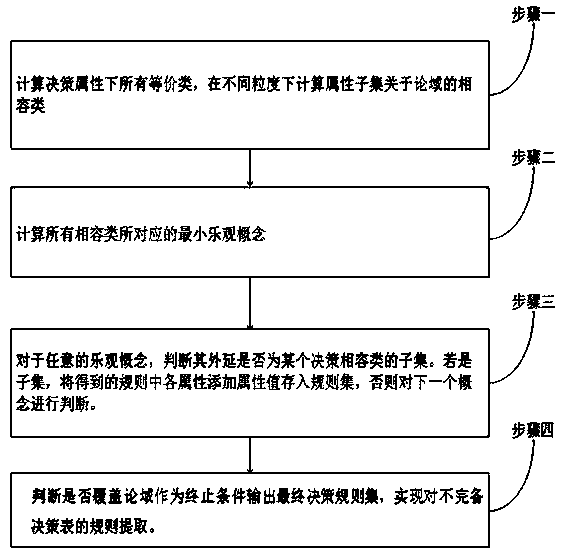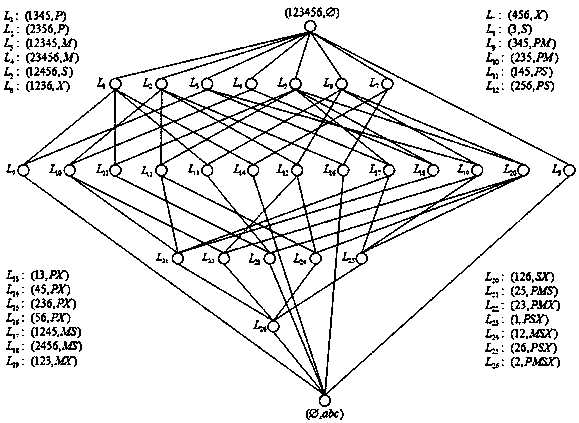Optimistic concept-based incomplete decision information system rule extraction algorithm
A technology for decision-making information and concepts, applied in computing, computing models, knowledge expression, etc., can solve the problems of redundant decision-making rules, lack of knowledge acquisition, and reduce the traditional concept lattice rule extraction algorithm to reduce complexity and redundancy. The effect of the judgment of the remainder rule
- Summary
- Abstract
- Description
- Claims
- Application Information
AI Technical Summary
Problems solved by technology
Method used
Image
Examples
Embodiment 1
[0072] As shown in Table 1, it is an incomplete decision information system T={U,A,V,f},
[0073] Where U={1,2,3,4,5,6}, A={P,M,S,X,D}, where P represents the attribute Price, M represents the attribute Mileage, S represents the attribute Size, and X represents the attribute Max_speed and D are decision attributes.
[0074] Table 1. Incomplete multivalued background
[0075]
[0076] First, obtain all compatible classes under the decision attributes as: U / D={{1,2,4,6},{3},{5}}.
[0077] In the case of granularity ω=1, the coverage of U under the conditional attributes is obtained, all compatible classes are obtained, and the corresponding optimistic concept is obtained, as shown in Table 2:
[0078] Table 2. Optimistic concept calculation process when ω=1
[0079]
[0080] To judge whether the extension of all optimistic concepts is a subset of the decision compatible class, we can get: only the concept (3, S) satisfies the condition, and a decision rule can be obtained:
[0081] In the ...
PUM
 Login to View More
Login to View More Abstract
Description
Claims
Application Information
 Login to View More
Login to View More - R&D
- Intellectual Property
- Life Sciences
- Materials
- Tech Scout
- Unparalleled Data Quality
- Higher Quality Content
- 60% Fewer Hallucinations
Browse by: Latest US Patents, China's latest patents, Technical Efficacy Thesaurus, Application Domain, Technology Topic, Popular Technical Reports.
© 2025 PatSnap. All rights reserved.Legal|Privacy policy|Modern Slavery Act Transparency Statement|Sitemap|About US| Contact US: help@patsnap.com



